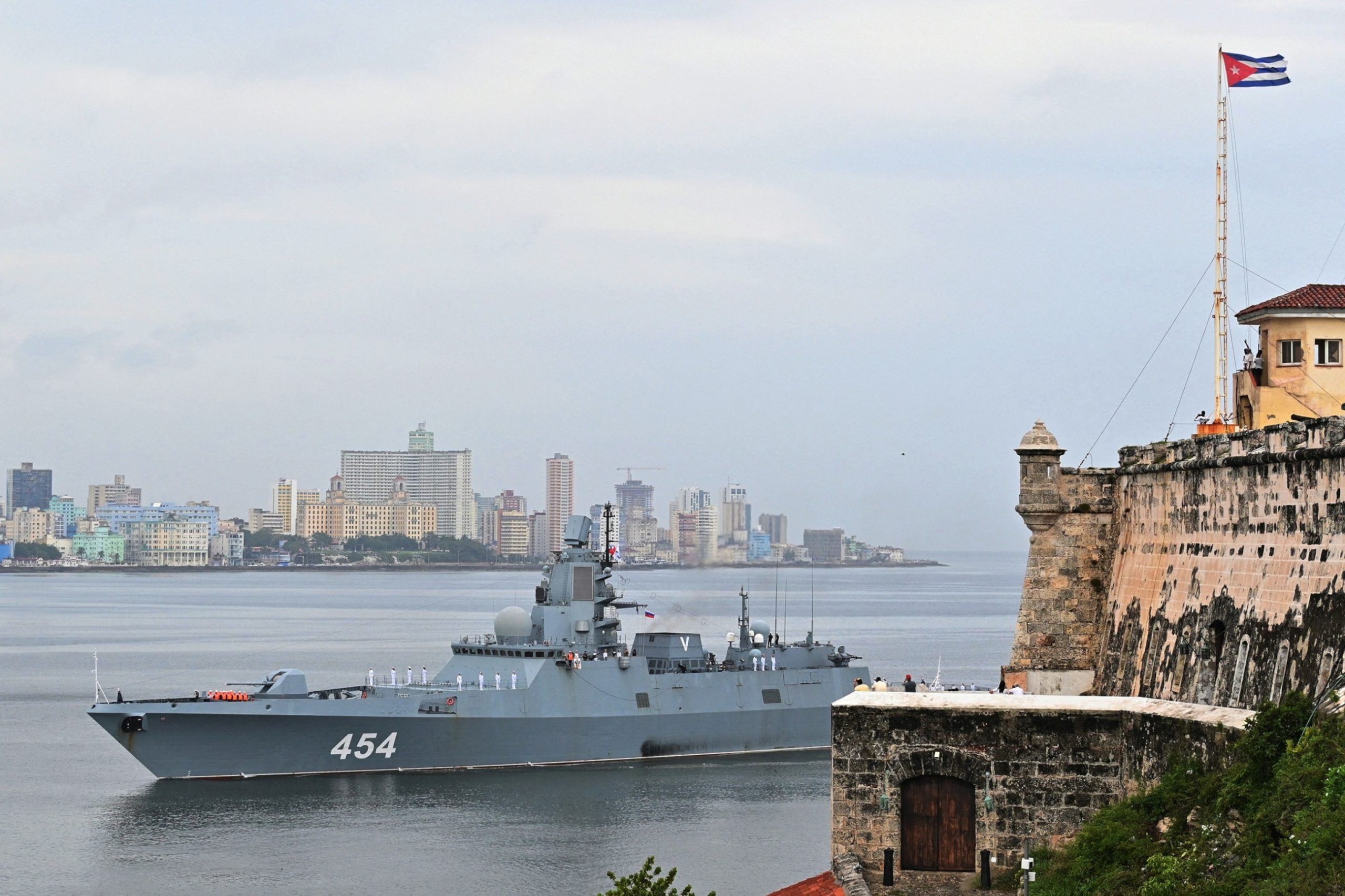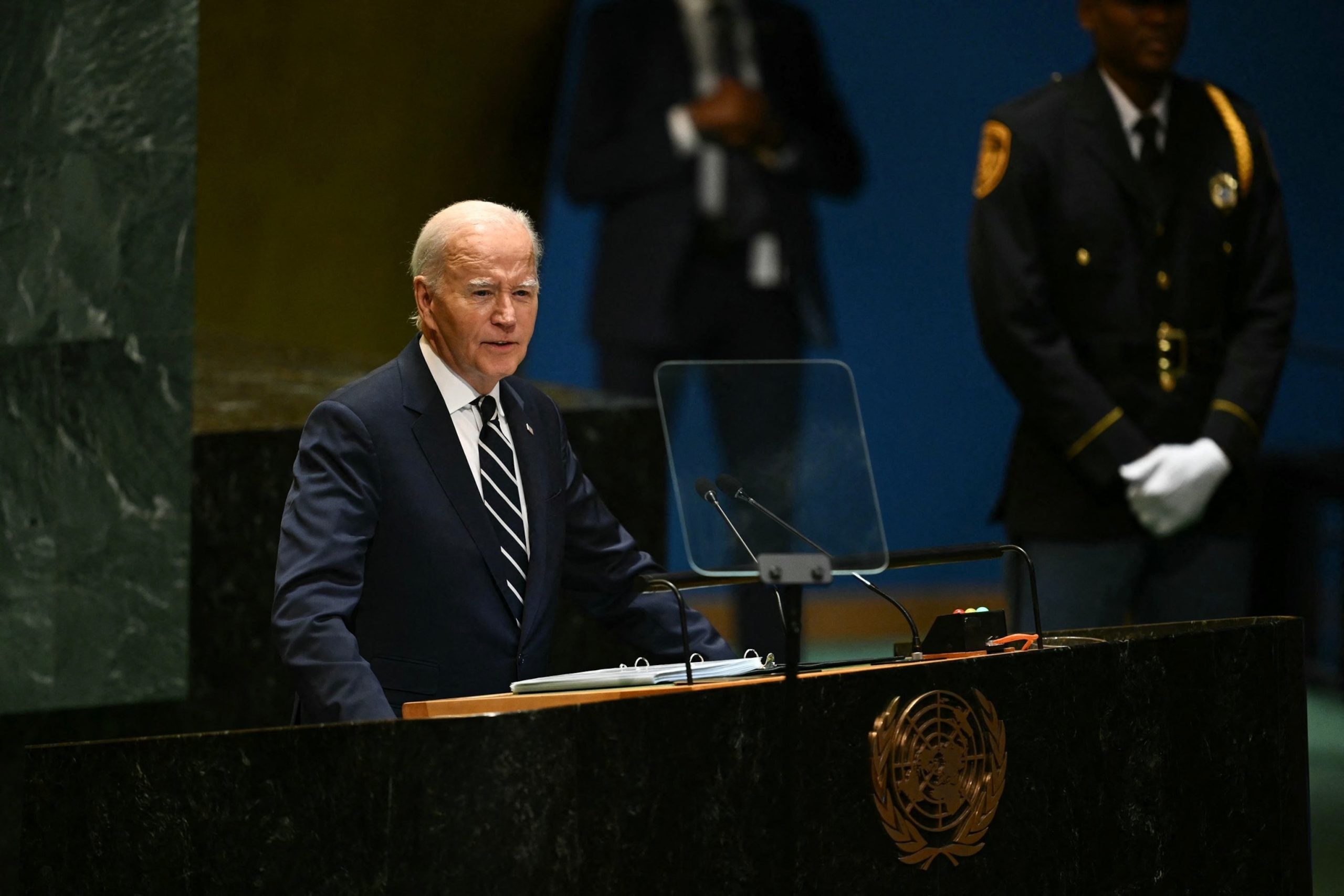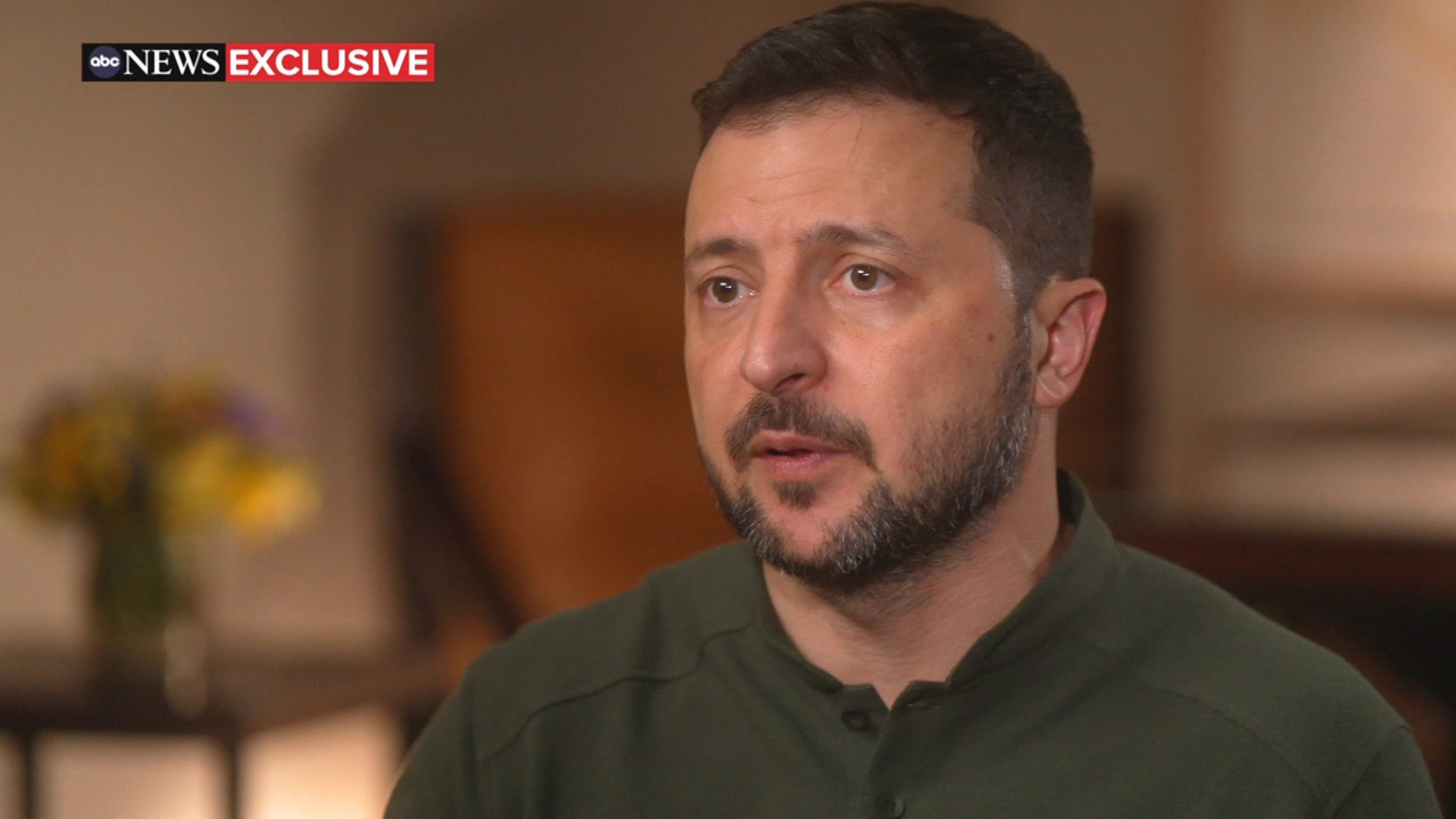The Pentagon is downplaying Wednesday’s arrival of four Russian Navy ships in Cuba as U.S. officials acknowledge that U.S. Navy ships “actively monitored” the Russian ships as they made their way to a port of call in Havana.
At the on-camera Pentagon press briefing, spokesperson Sabrina Singh downplayed the Russian naval flotilla’s arrival in Havana noting that it’s happened multiple times over the years but acknowledged that U.S. military assets had been tracking the ships on their way to Cuba.
“We’ve been tracking the Russians plans for this,” Sabrina Singh, the Pentagon’s deputy press secretary told reporters Wednesday.
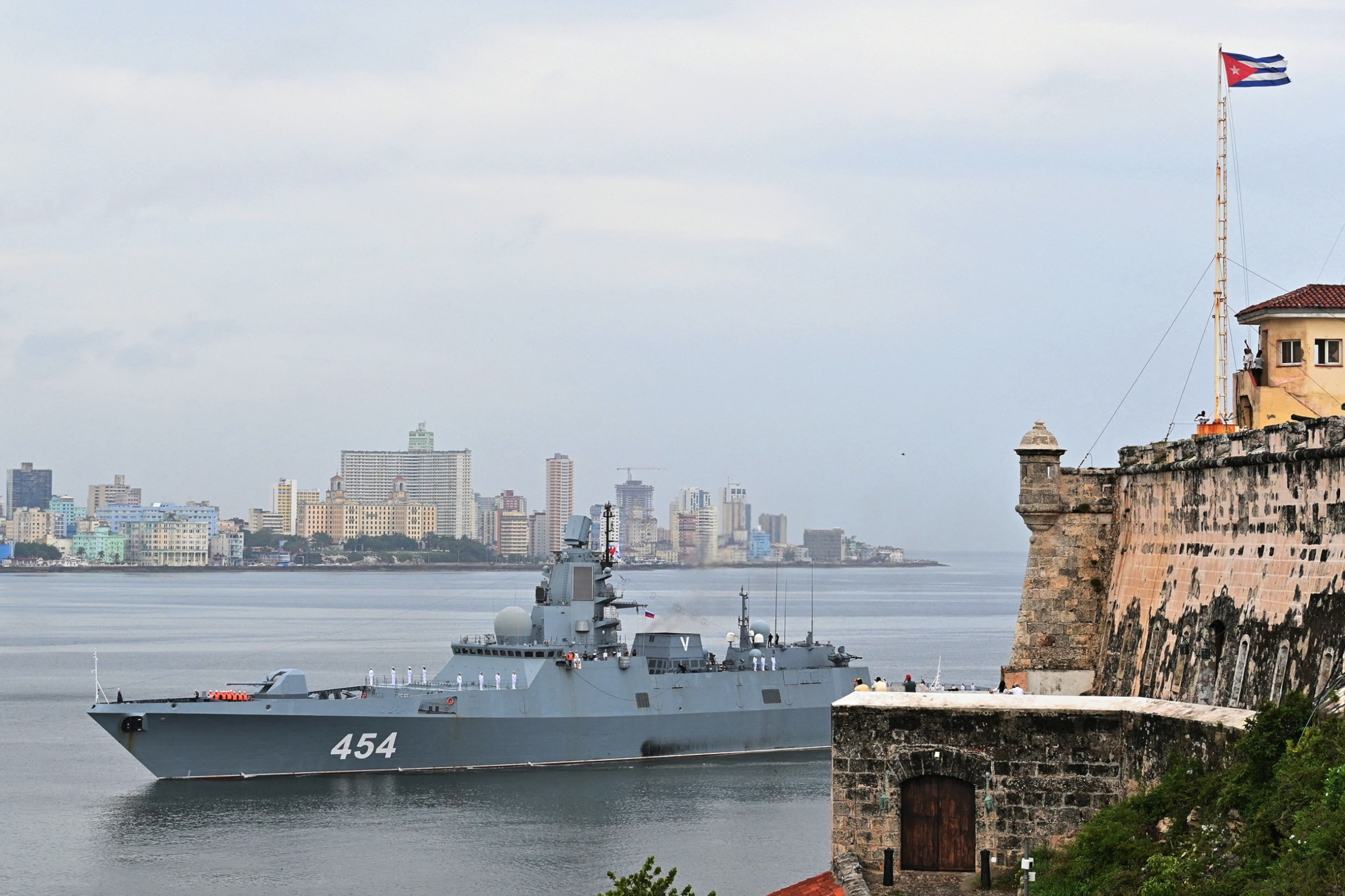
Russian frigate Admiral Gorshkov enters Havana’s bay, Cuba, June 12, 2024.
Stringer/Reuters
The Russian ships’ transit towards Cuba was monitored by six warships from the United States Navy, Canada, and France. They included the U.S. Navy destroyers USS Donald Cook, USS Delbert Black, USS Truxton, U.S. Coast Guard Cutter Stone, the Canadian frigate HMCS Ville de Quebec, and a French Lafayette class frigate.
“This is not a surprise we’ve seen them do this these type of port calls before and these are routine naval visits that we’ve seen under different administrations,” Singh said.
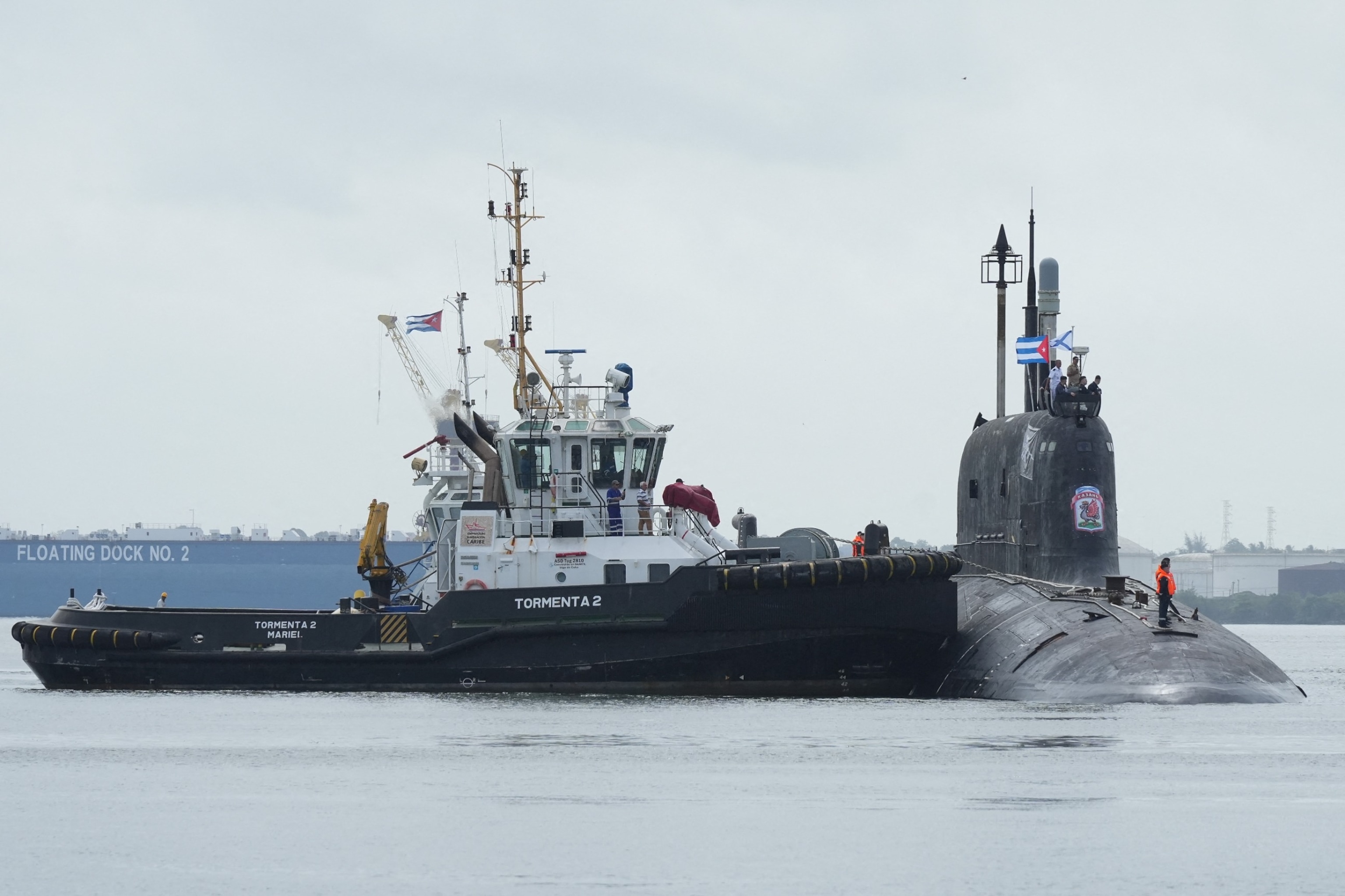
A tug boat manoeuvres Russian nuclear-powered cruise missile submarine Kazan as it docks in Havana’s bay, Cuba, June 12, 2024.
Alexandre Meneghini/Reuters
“We’re always constantly going to monitor any foreign vessels operating near U.S. territorial waters,” she added. U.S. territorial waters stretch out 12 nautical miles from the coastline.
A U.S. official said the Russian ships never came close to the American coastline as they transited the Atlantic Ocean.
Russia’s Defense Ministry has been very open about the port of call in Havana being made by the frigate “Admiral Gorshkov,” the nuclear-powered submarine “Kazan,” the sea supply tanker “Akademik Pashin” and the ocean rescue tug “Nikolai Chiker.”
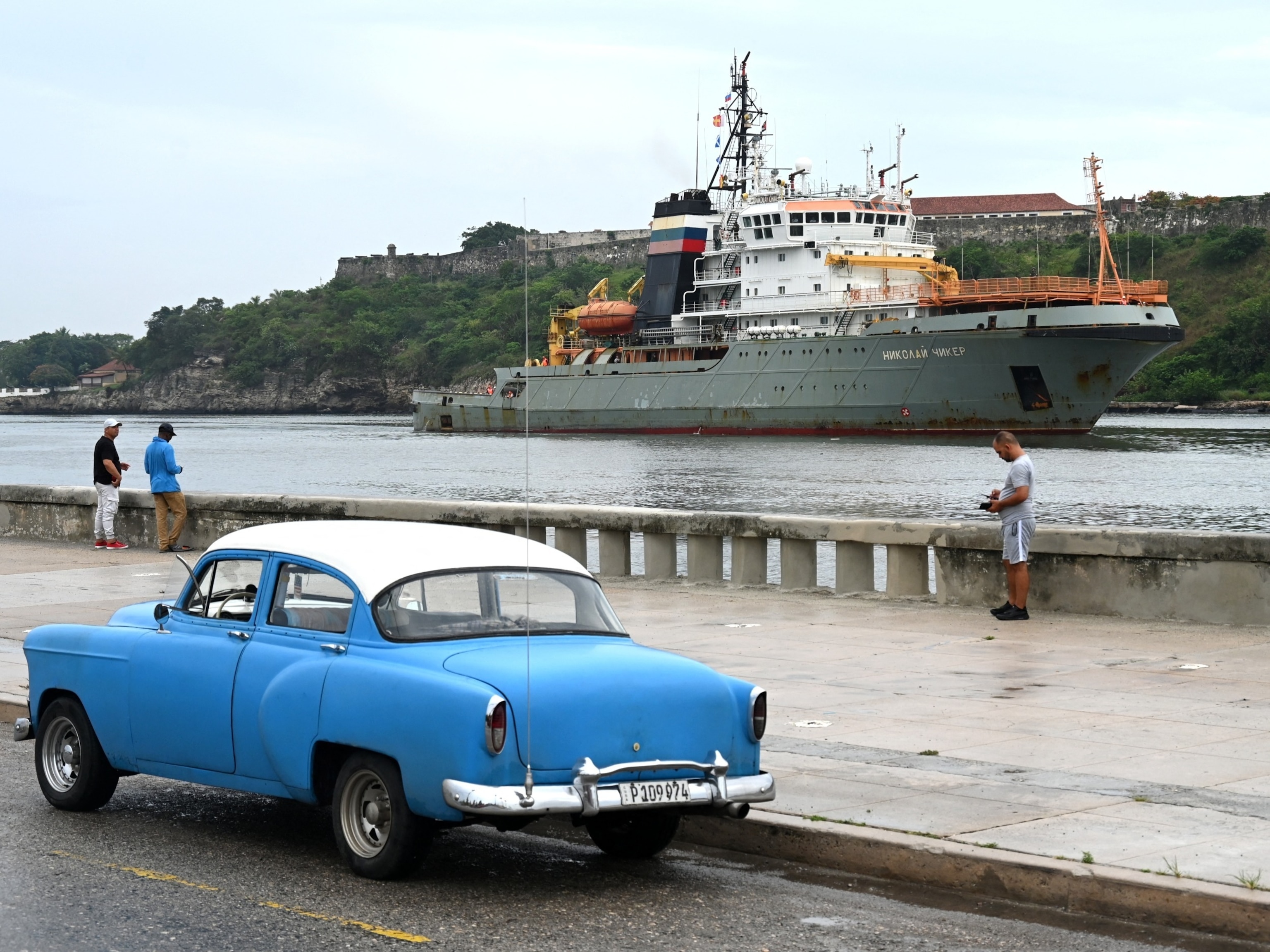
The rescue and tugboat Nicolay Chiker, part of the Russian naval detachment visiting Cuba, arrives at Havana’s harbour, June 12, 2024.
Adalberto Roque/AFP via Getty Images
Cuba’s defense ministry has described the visit as “keeping with the historical friendly ties between Cuba and the Russian Federation and is fully consistent with international rules.” In a statement, the ministry said “none of the ships carry nuclear weapons, due to which our country does not pose any threat to the region.”
Even though the Russian ships are in port, Singh said the U.S. was “going to continue to monitor what’s happening in the region.”
According to the Pentagon, Russia has sailed warships into the Western Hemisphere yearly from 2013 to 2020 with regular port visits into Havana.
The most recent docking of a warship was in June 2023 though the most recent military exercise in the region was in 2008 with Venezuela.
A U.S. official said that the port visit to Havana will last a few days and that sometime next week the Russian flotilla is expected to make a port of call in Venezuela.
The recent news of Russian warships docking in Cuba has raised concerns and questions about the implications for US national security and foreign policy. The Pentagon has provided some perspective on this development, shedding light on the situation and offering insights into the potential implications.
According to Pentagon officials, the presence of Russian warships in Cuba is not necessarily a cause for alarm. Russia has a long history of military cooperation with Cuba, dating back to the Cold War era. The docking of Russian warships in Cuban ports is not uncommon and is often seen as a routine part of their military cooperation.
However, the timing of this latest docking has raised eyebrows, coming at a time of heightened tensions between the US and Russia over various issues, including Ukraine and Syria. Some experts believe that Russia may be using its military presence in Cuba as a way to send a message to the US and assert its influence in the region.
Despite these concerns, Pentagon officials have emphasized that the US remains vigilant and closely monitors Russian military activities in the region. The US has a strong military presence in the Caribbean and Latin America, including naval bases in Guantanamo Bay, Cuba, and Puerto Rico. The Pentagon is prepared to respond to any potential threats or provocations from Russia or any other foreign power.
It is important to note that the presence of Russian warships in Cuba does not necessarily pose a direct threat to US national security. The US and Russia have a complex relationship with both cooperation and competition in various areas. The Pentagon continues to engage with Russian counterparts through established channels to prevent misunderstandings and avoid escalation of tensions.
In conclusion, while the docking of Russian warships in Cuba may raise concerns, it is important to keep things in perspective. The Pentagon is closely monitoring the situation and remains prepared to respond to any potential threats. The US and Russia have a complex relationship, and it is crucial for both sides to communicate and maintain open lines of dialogue to prevent misunderstandings and avoid conflict.
